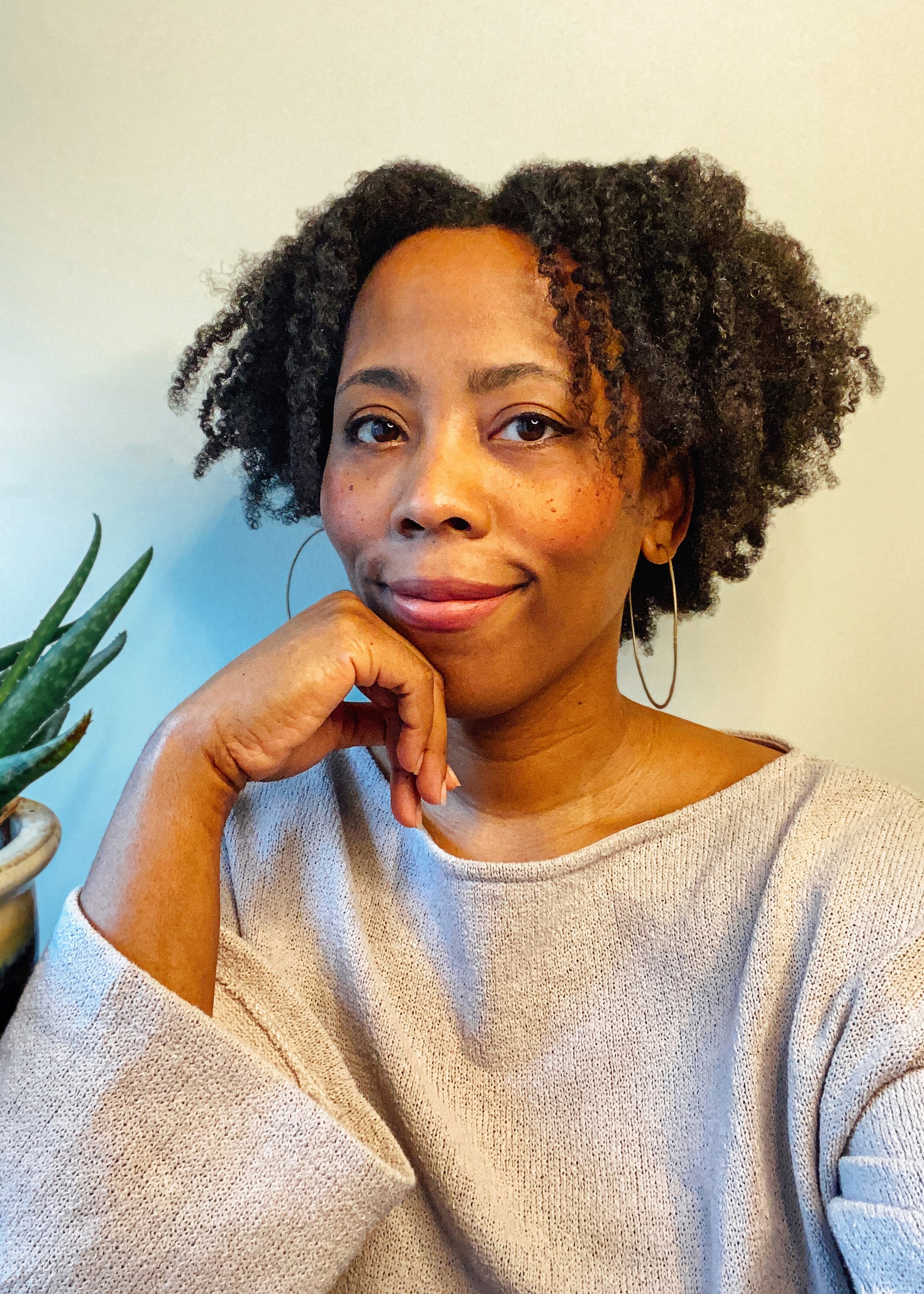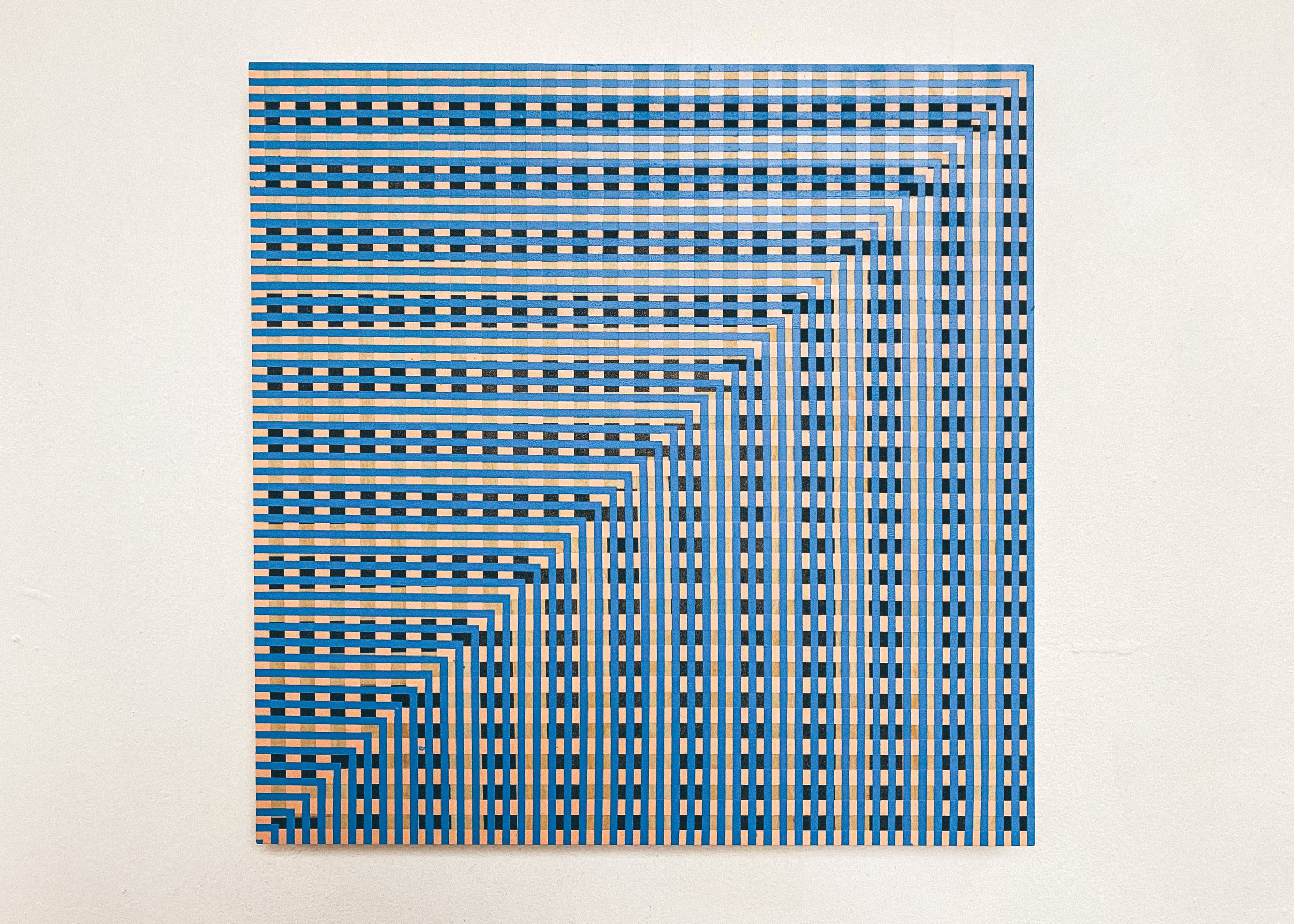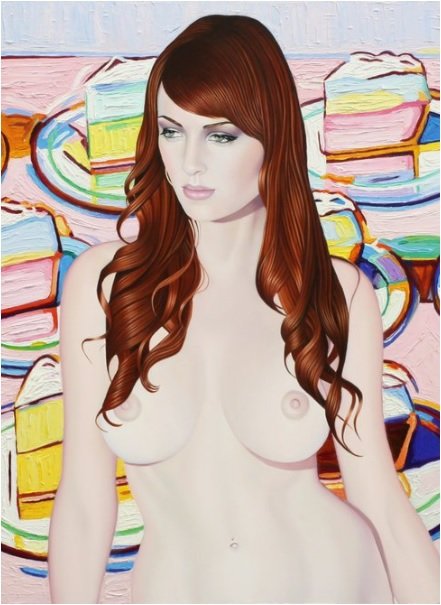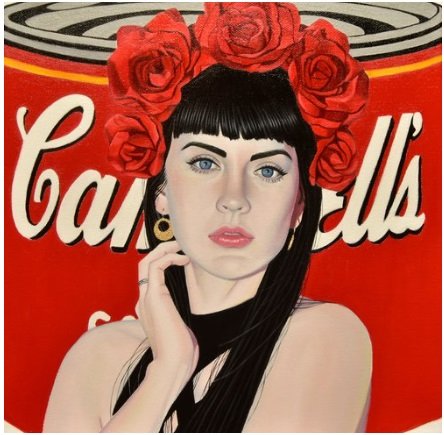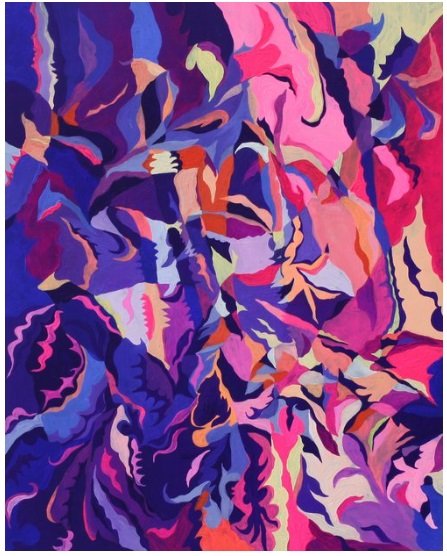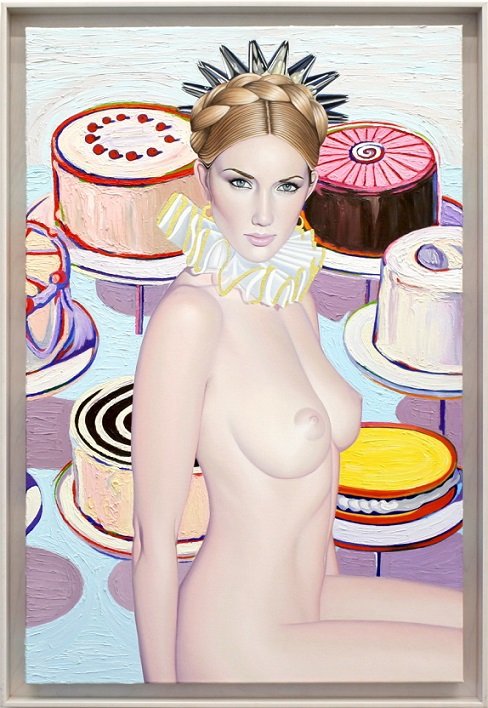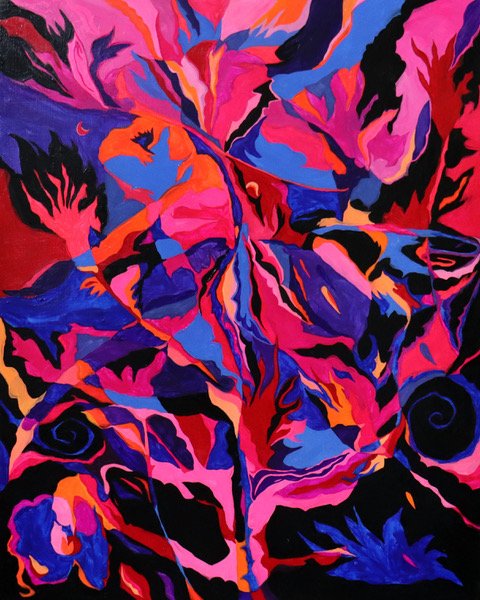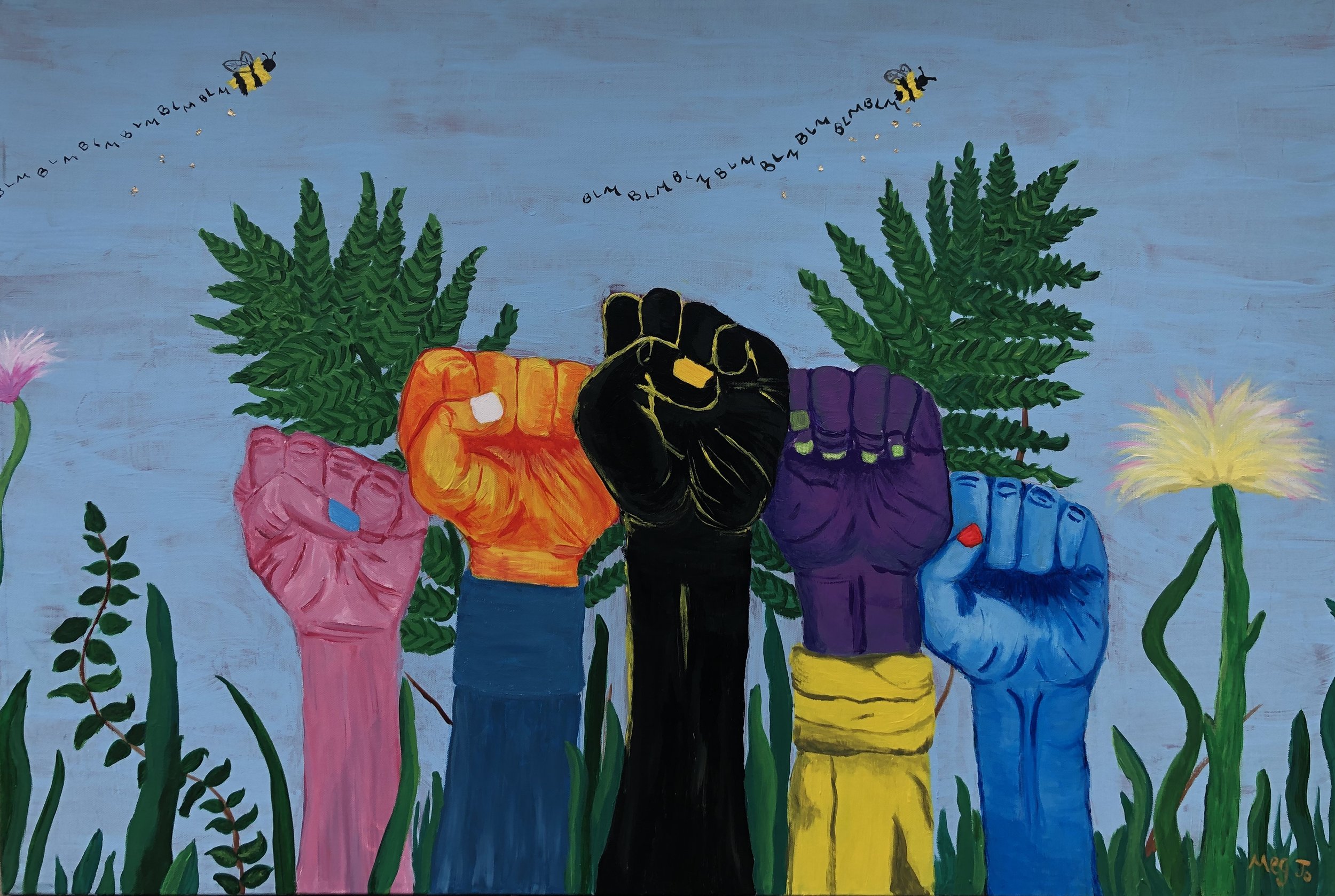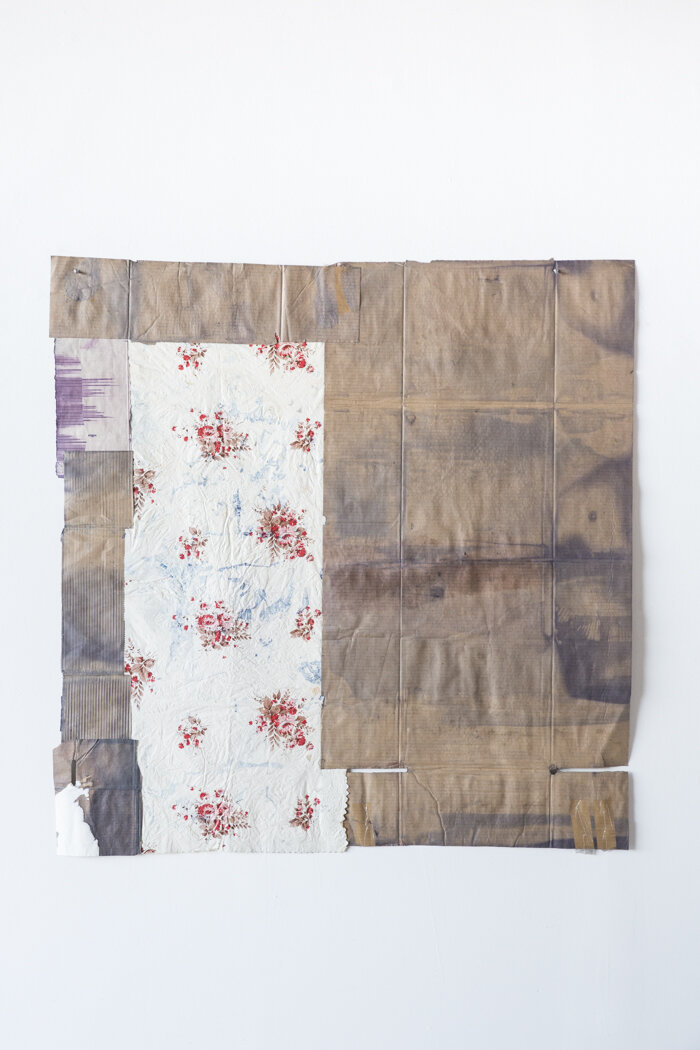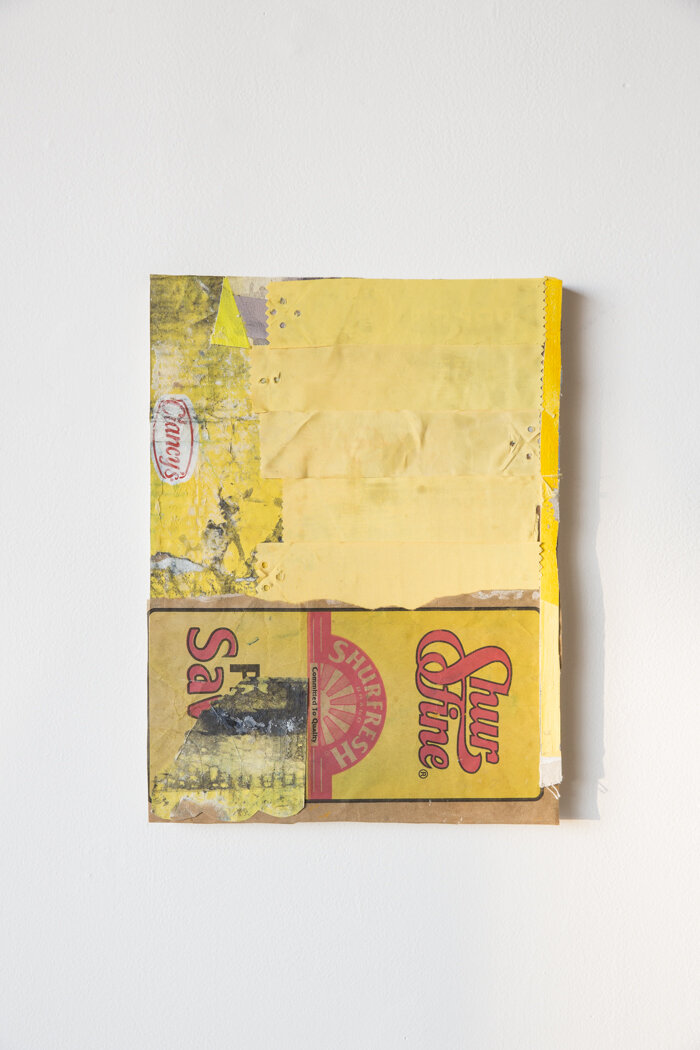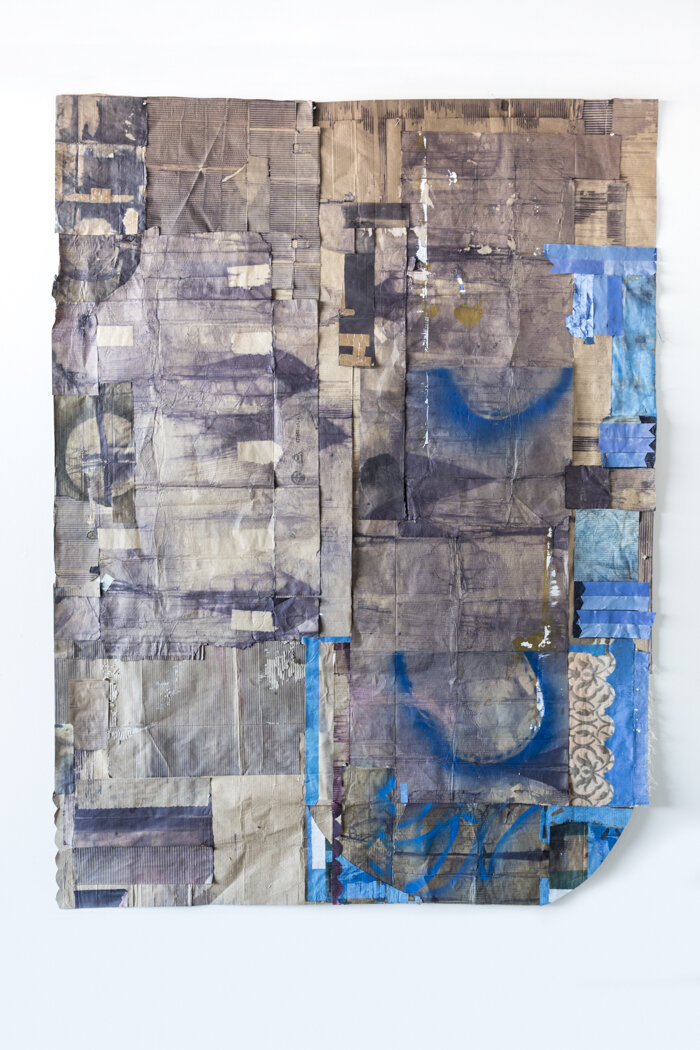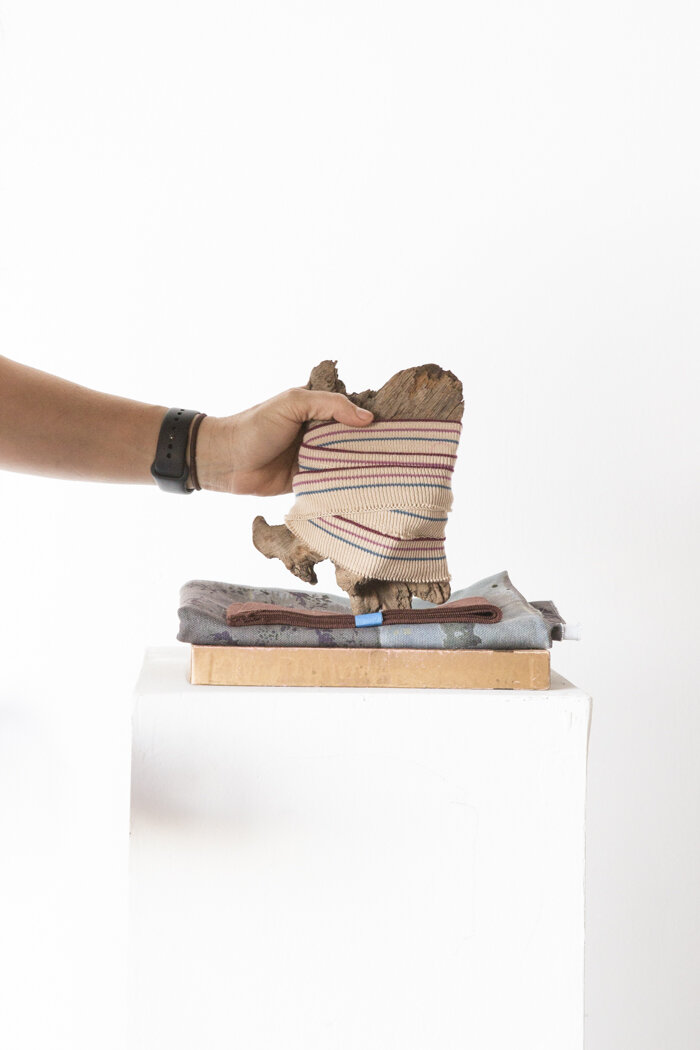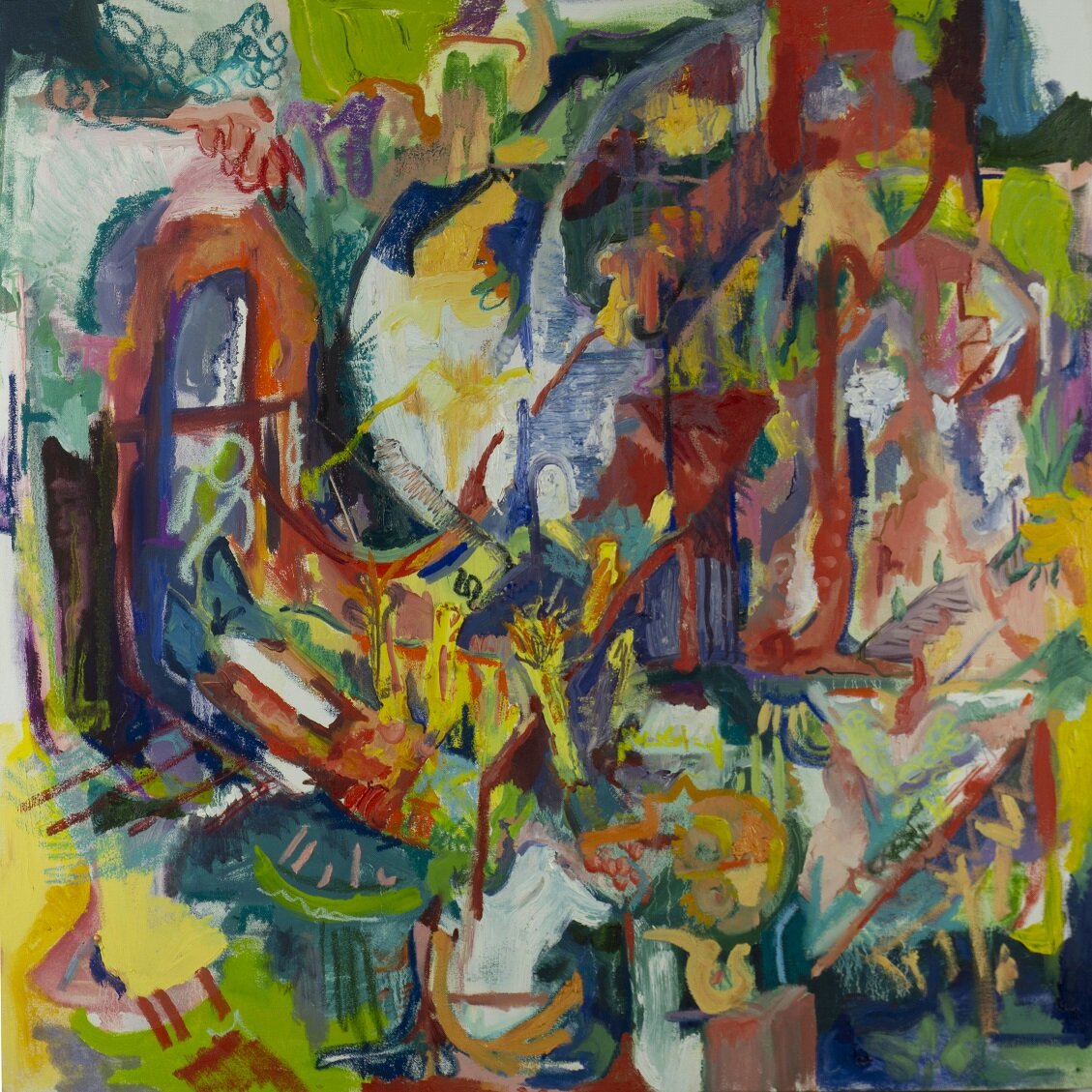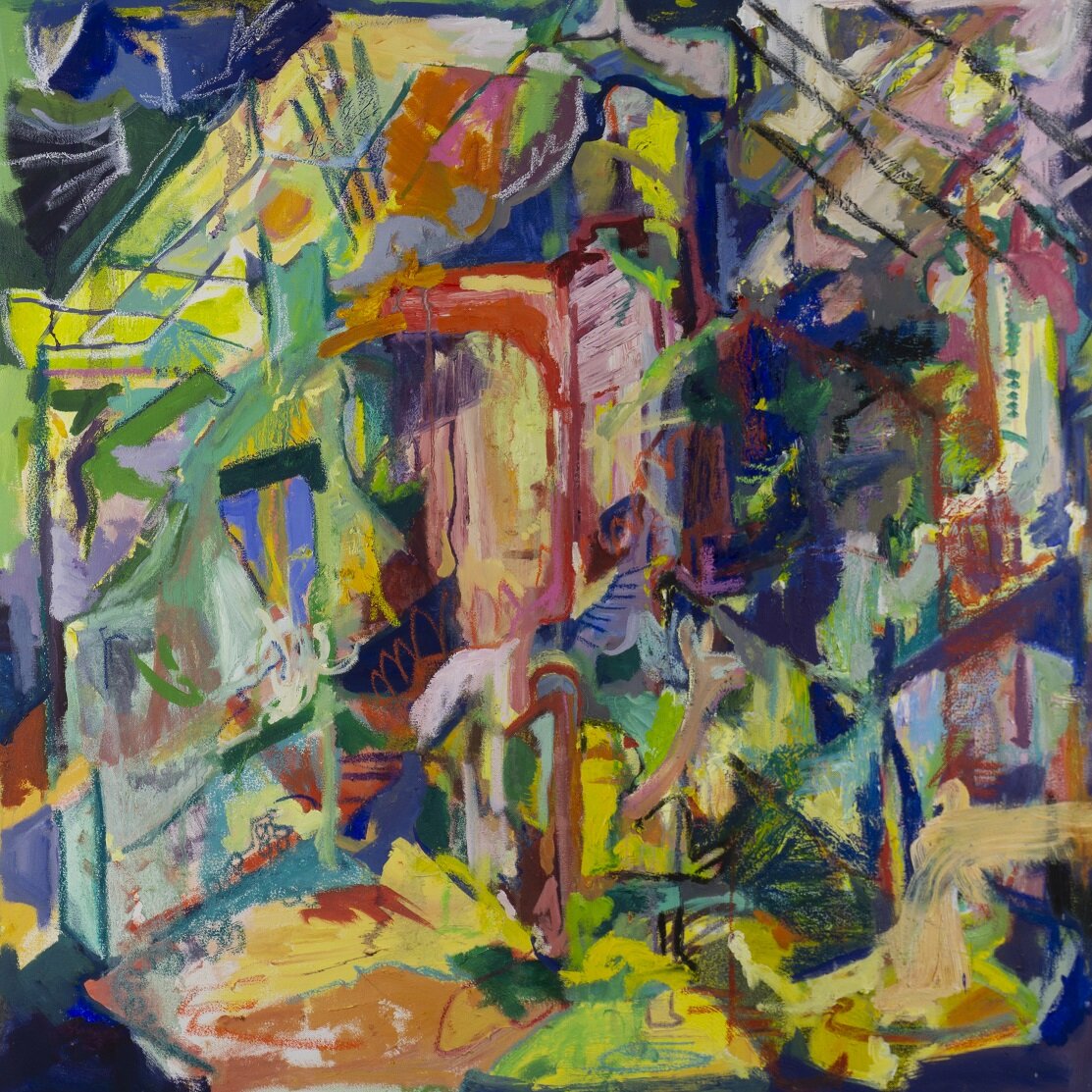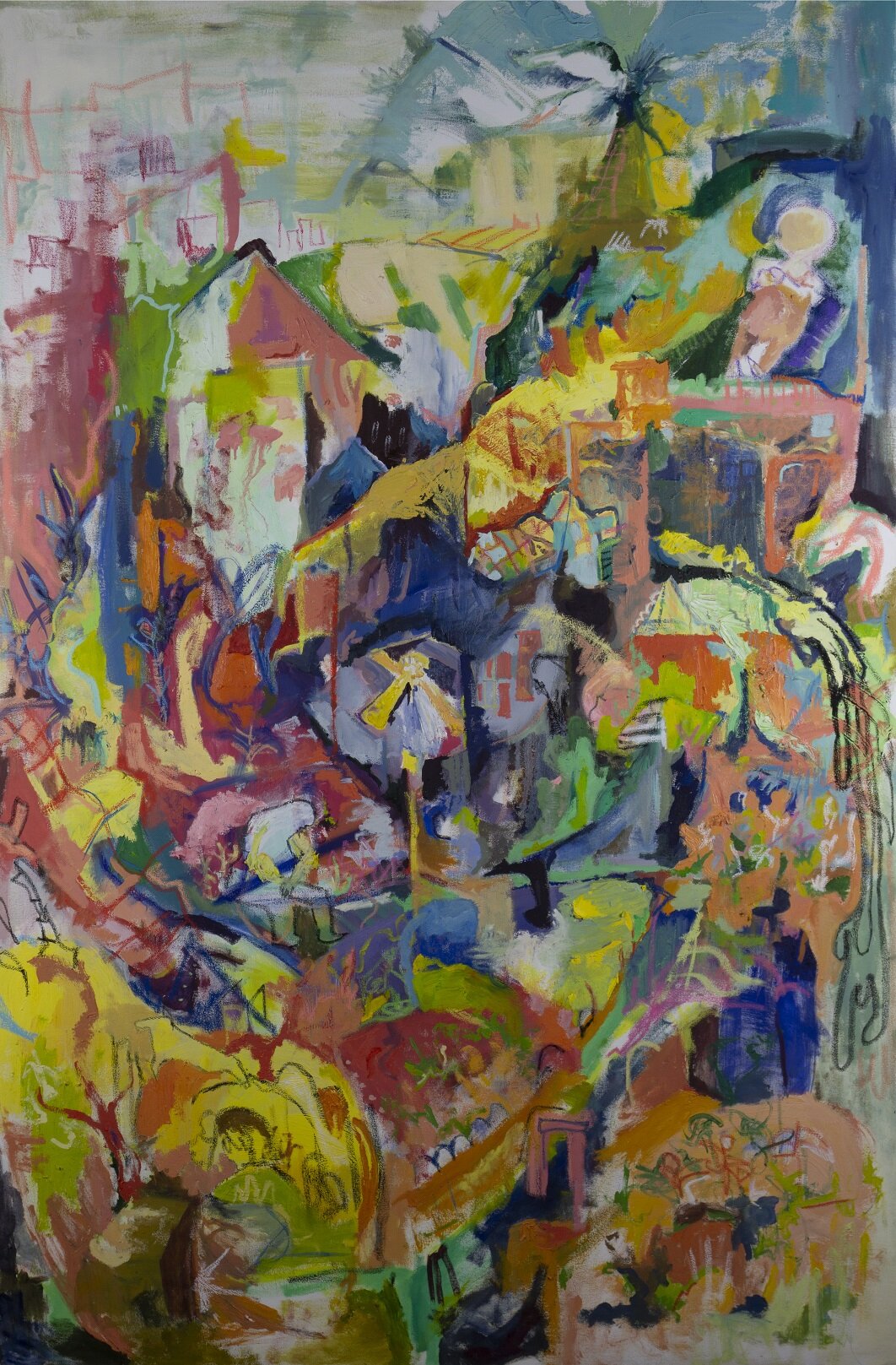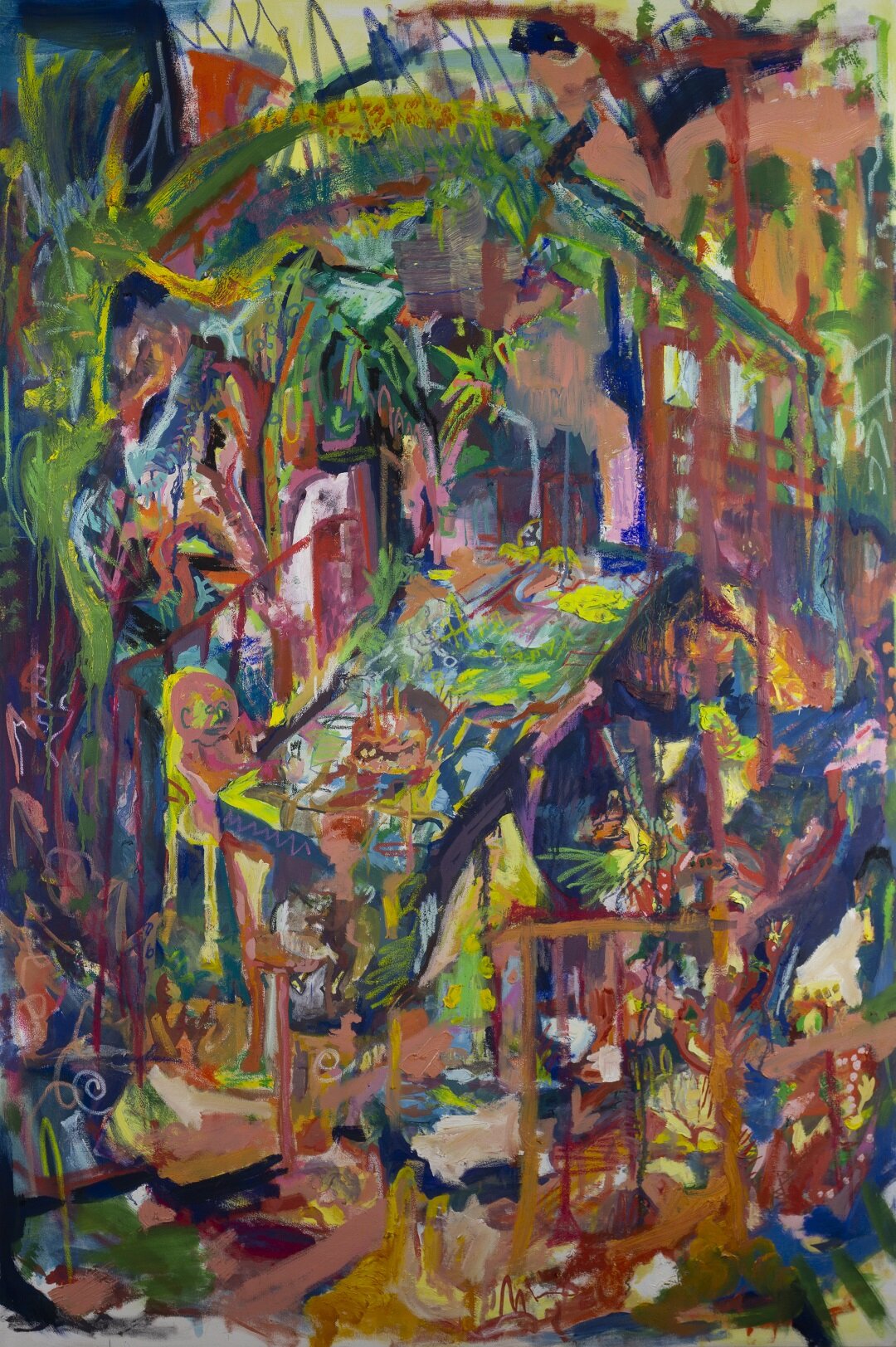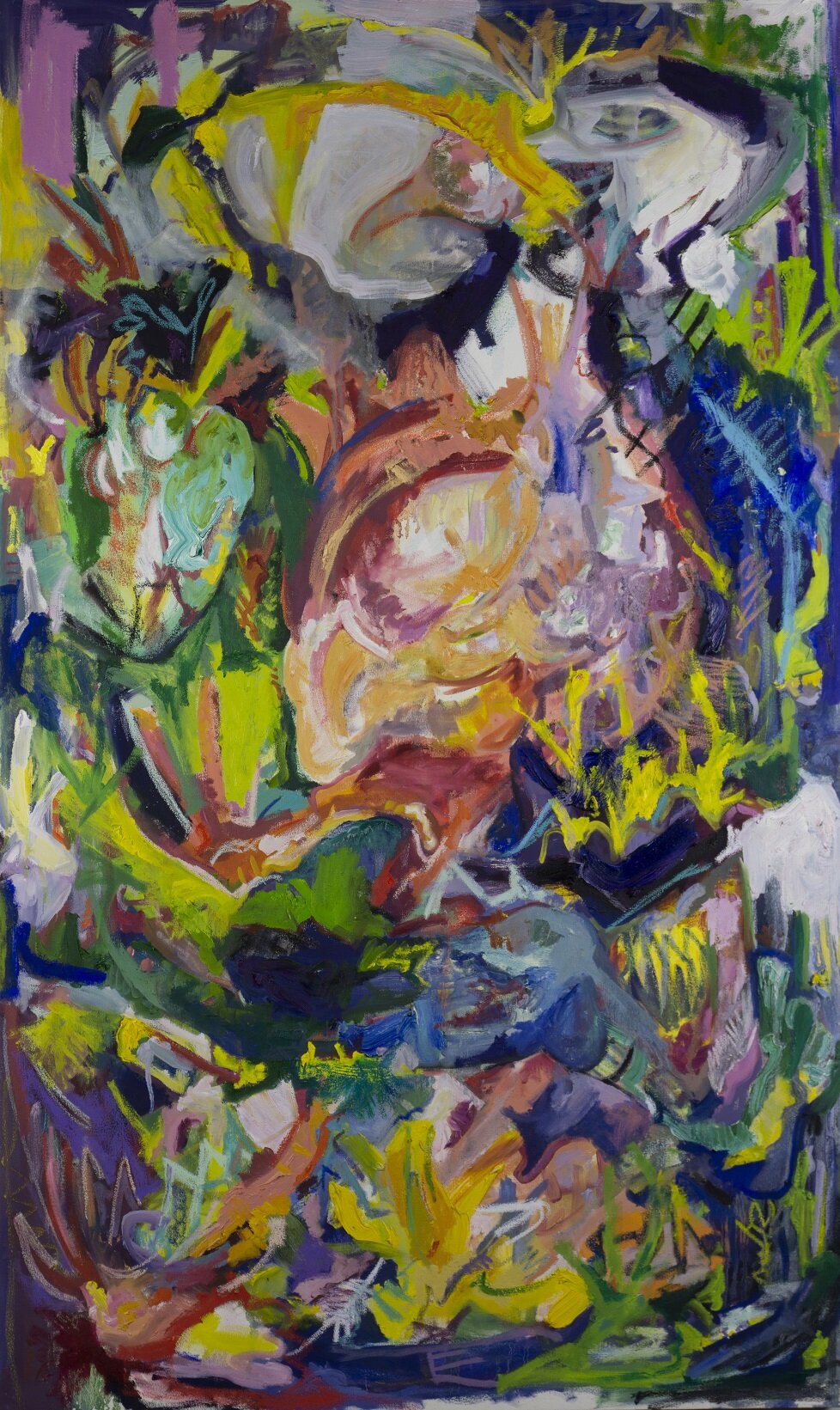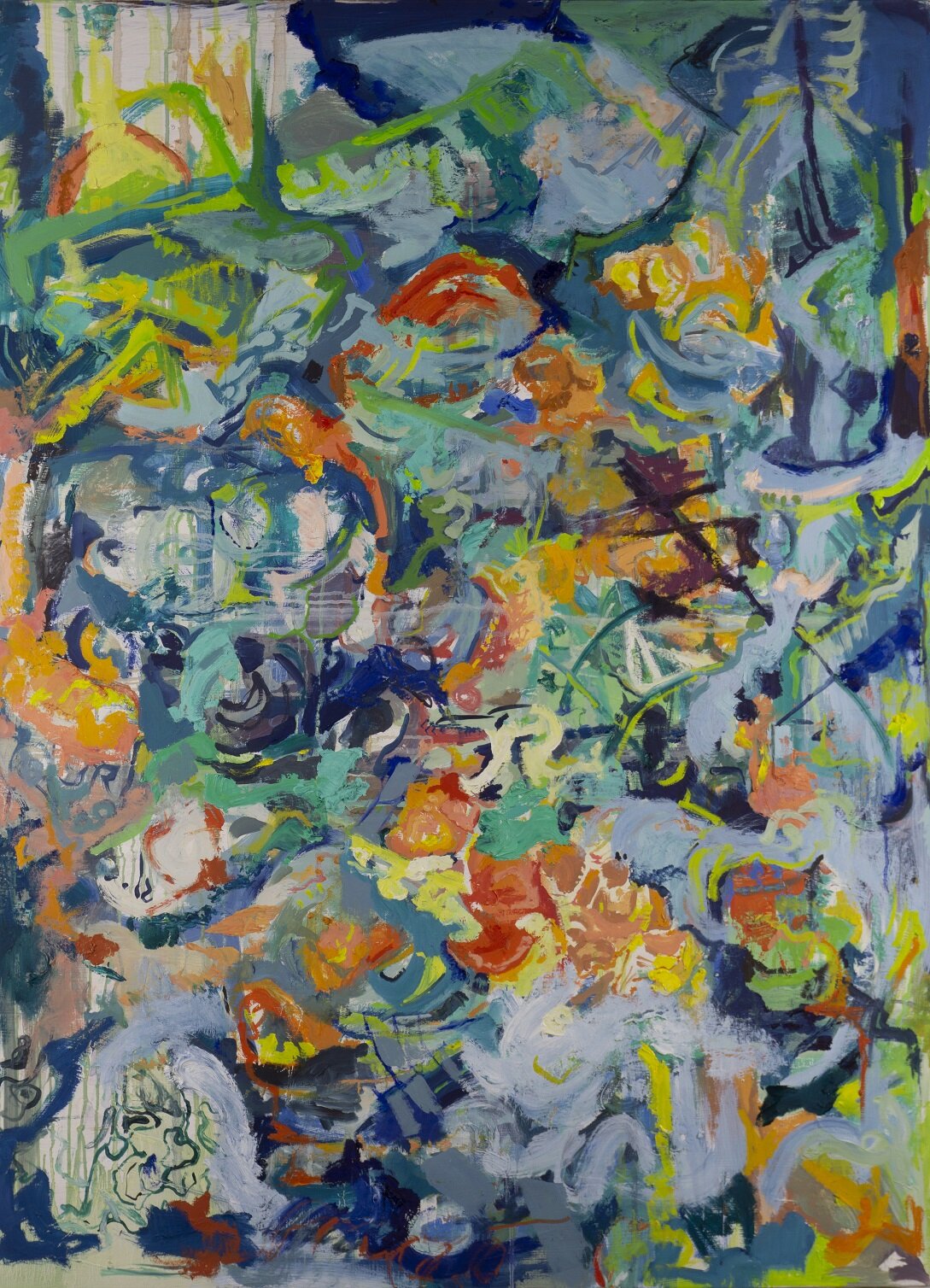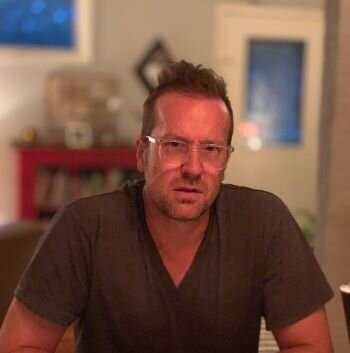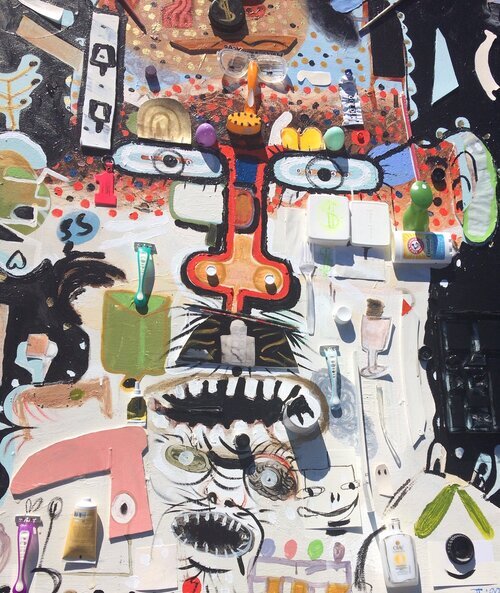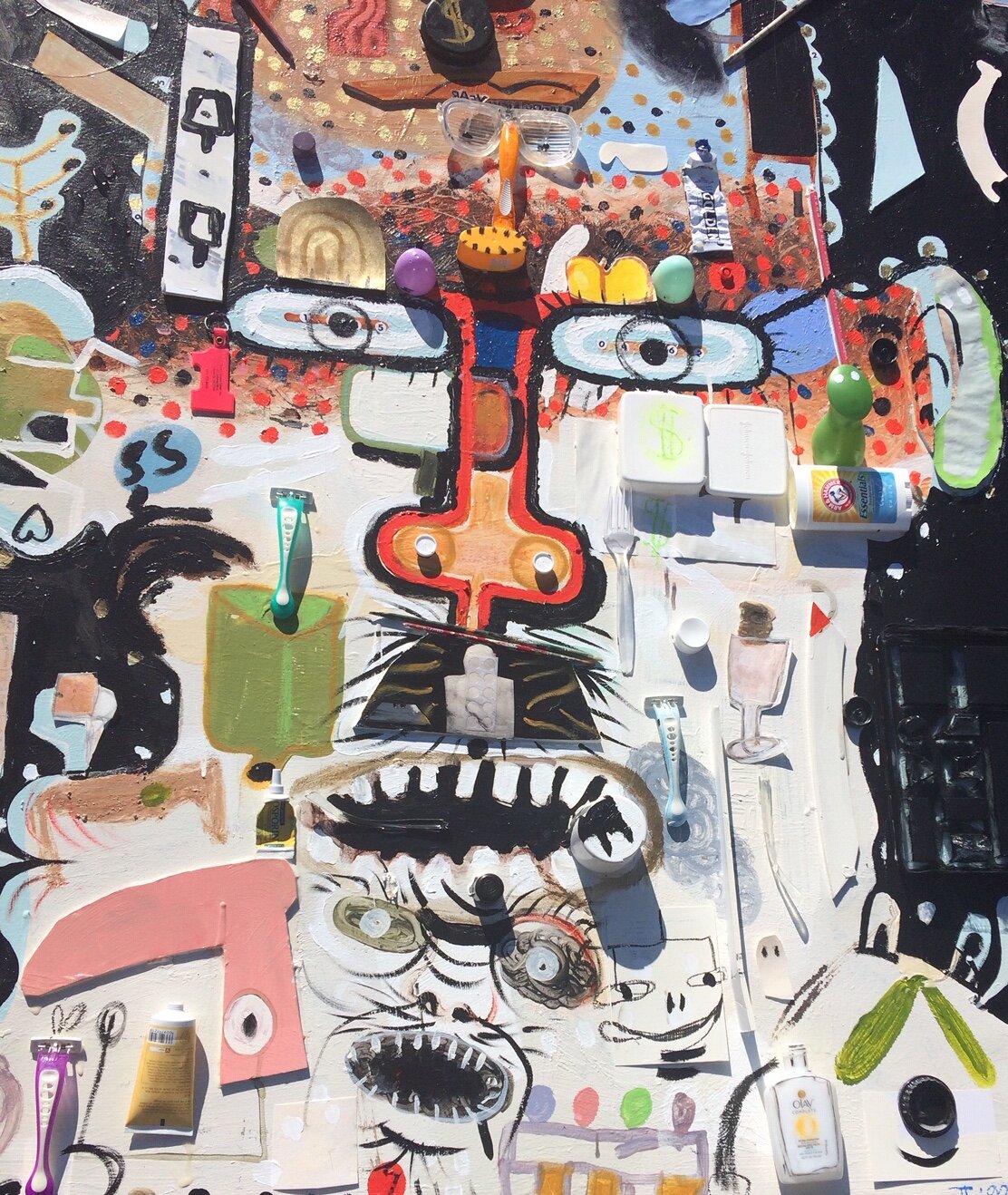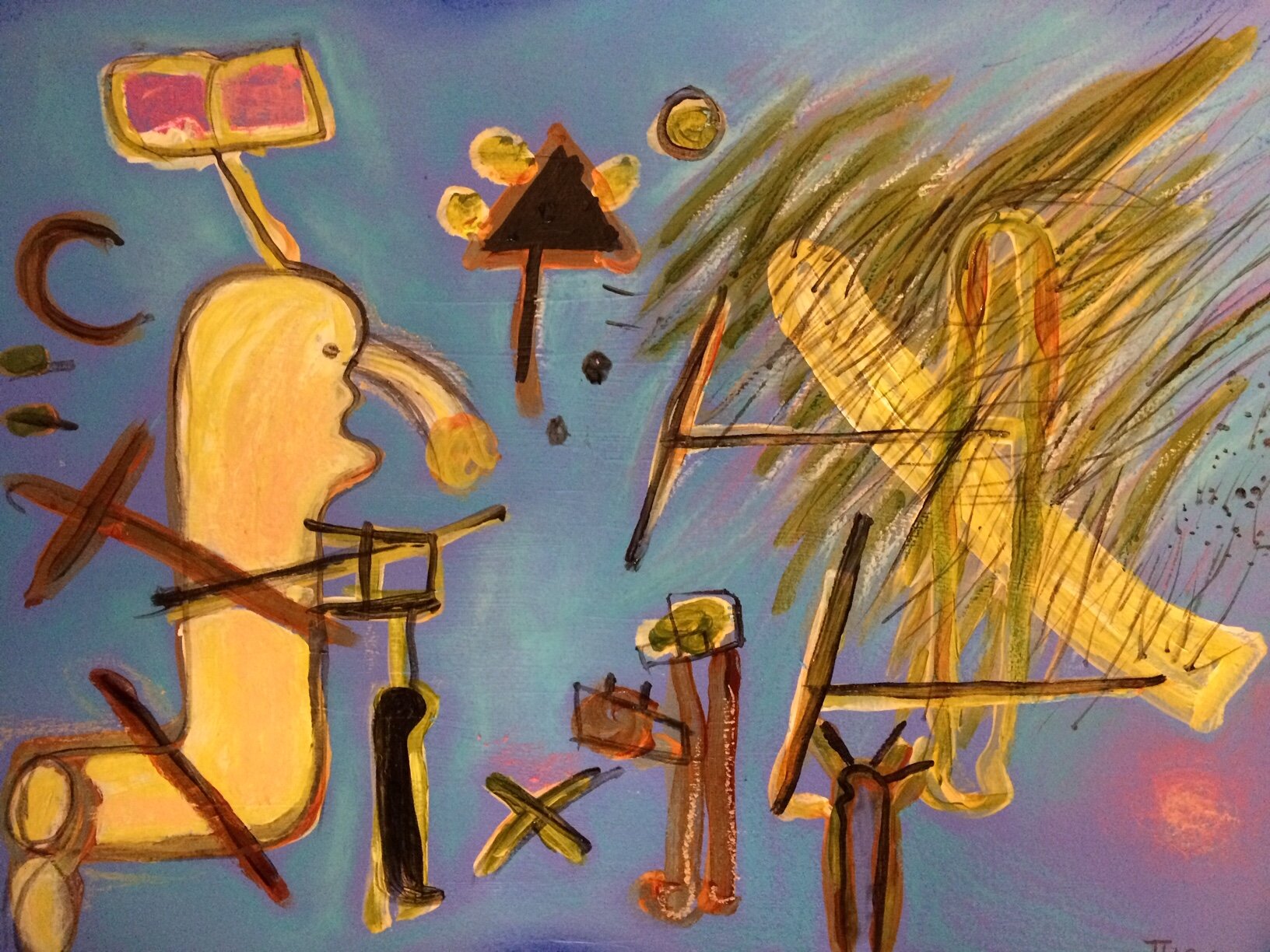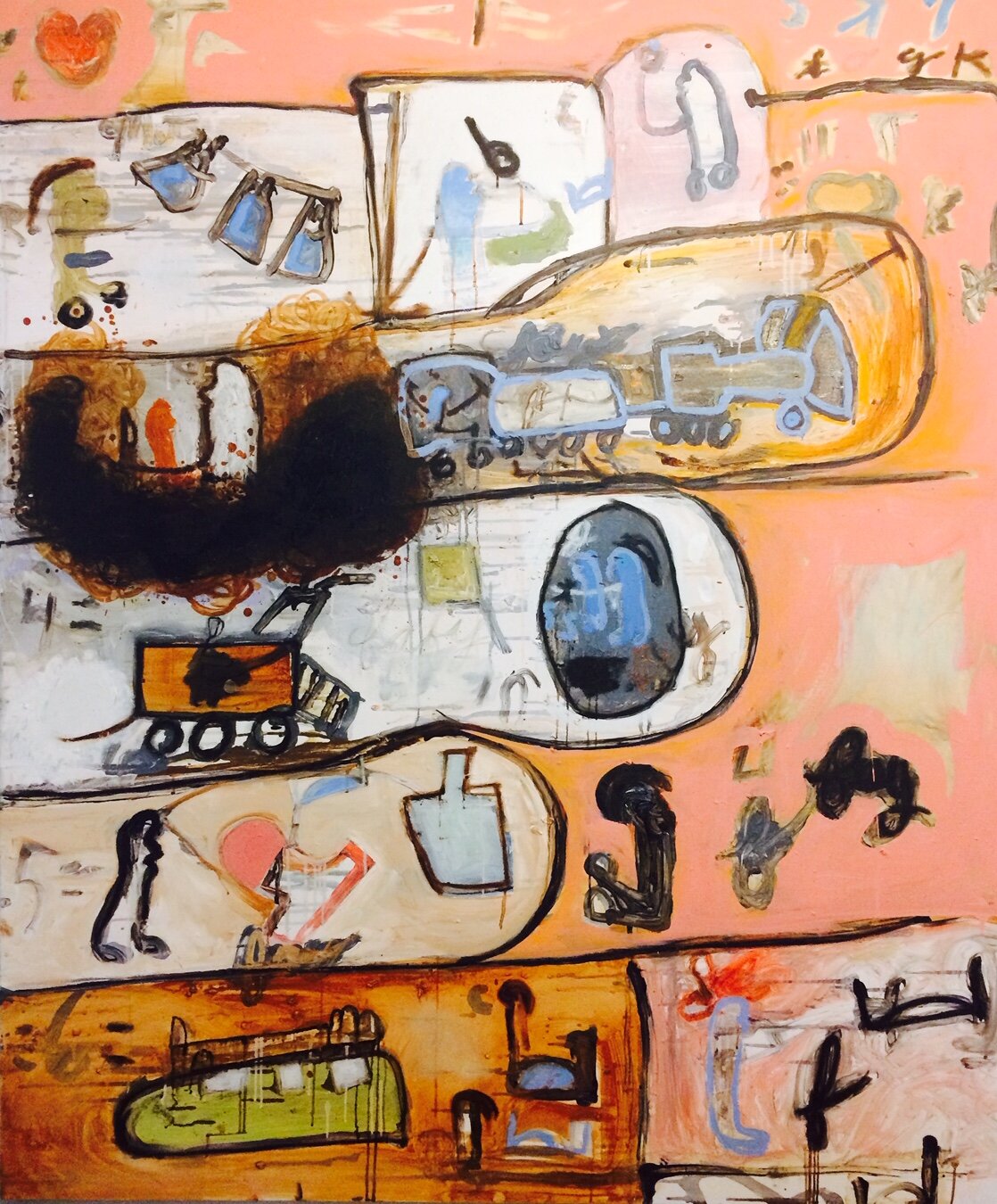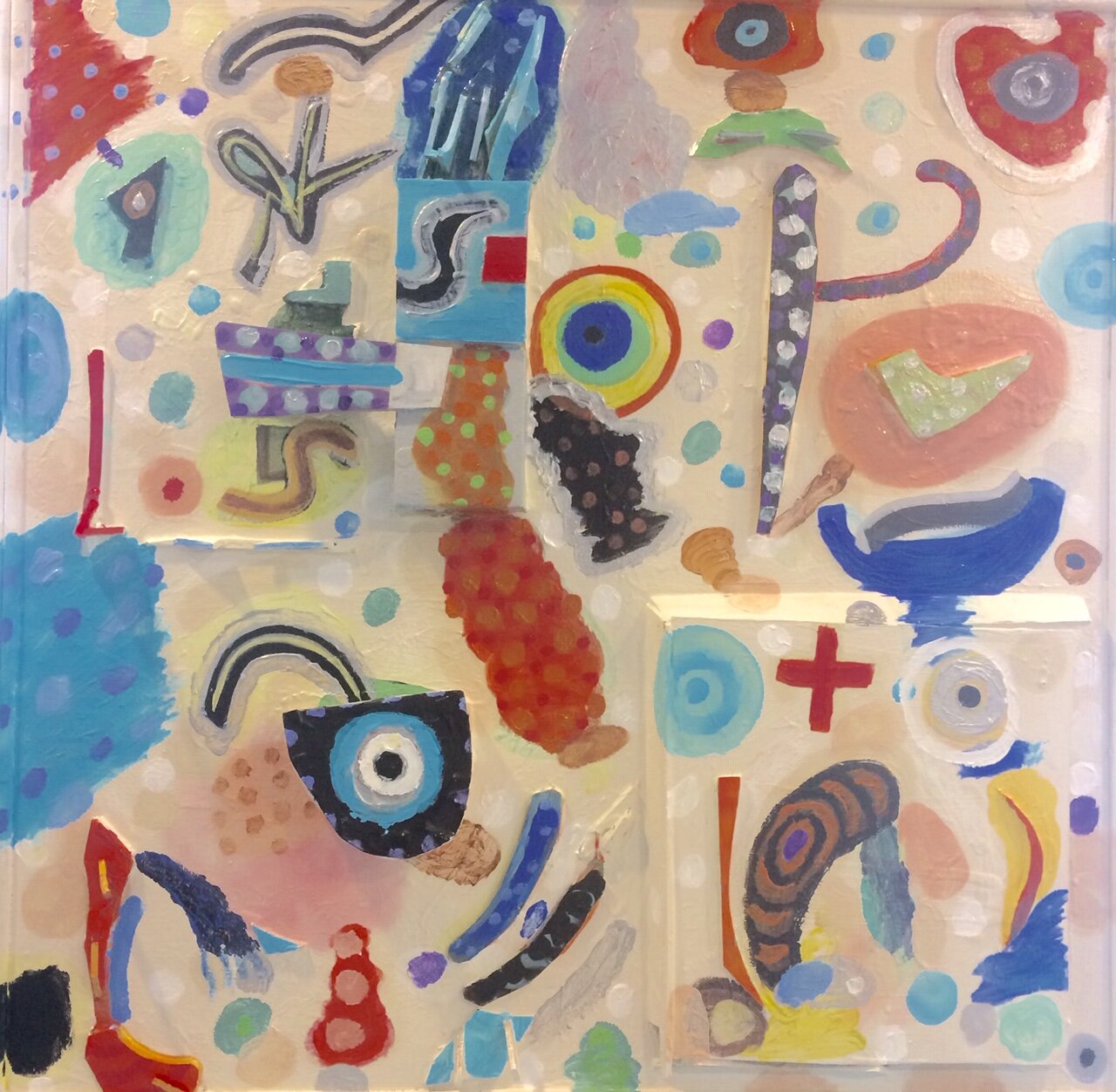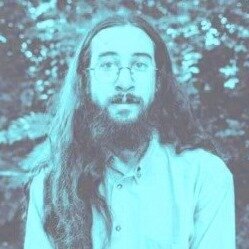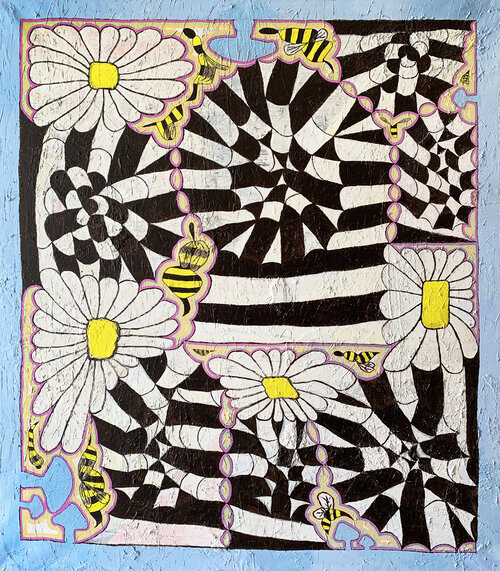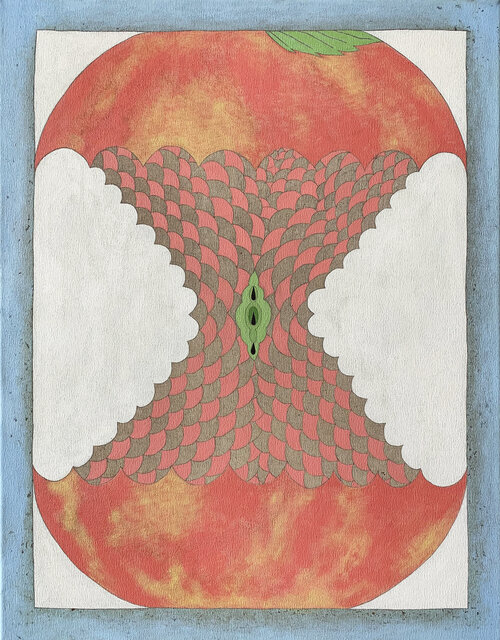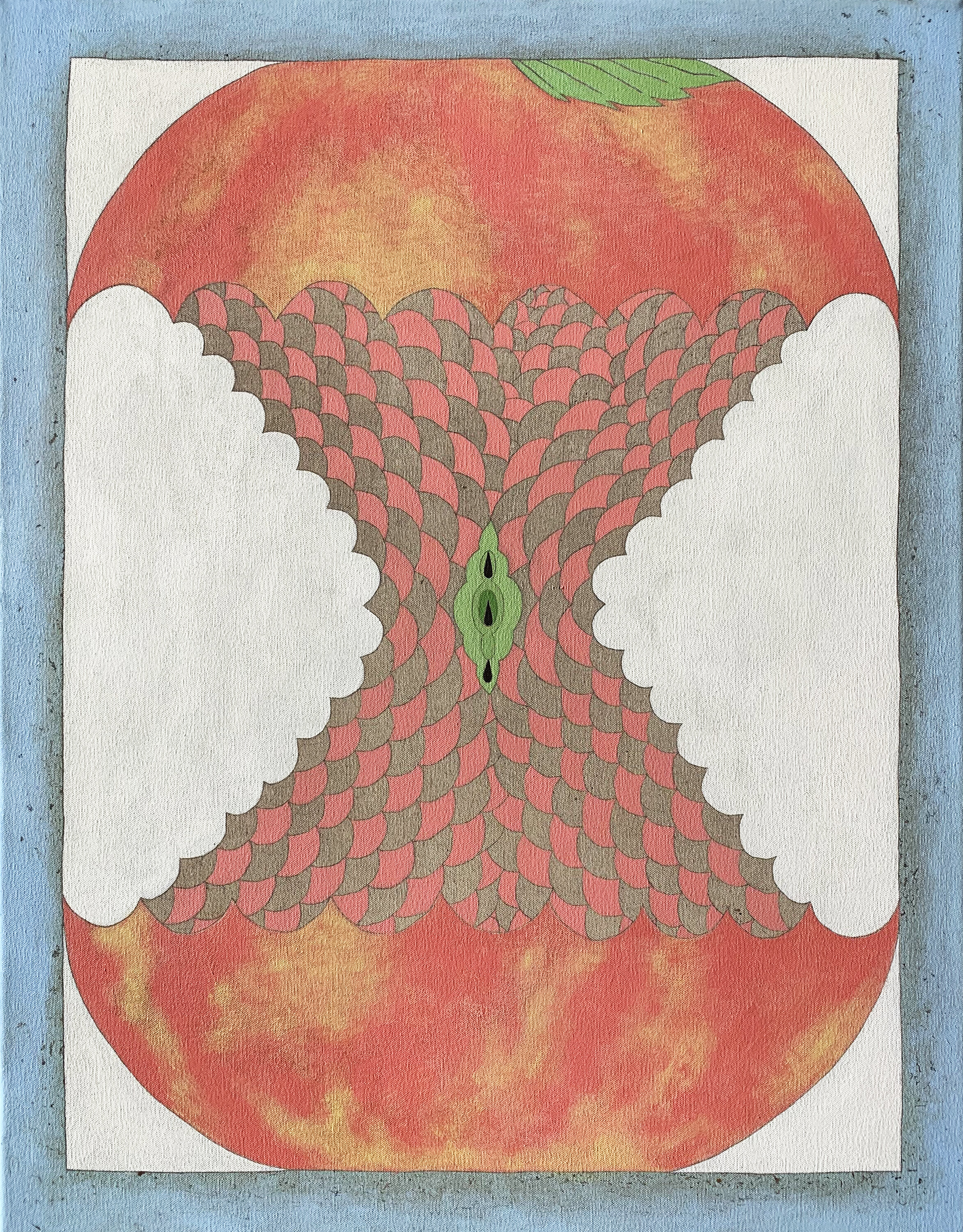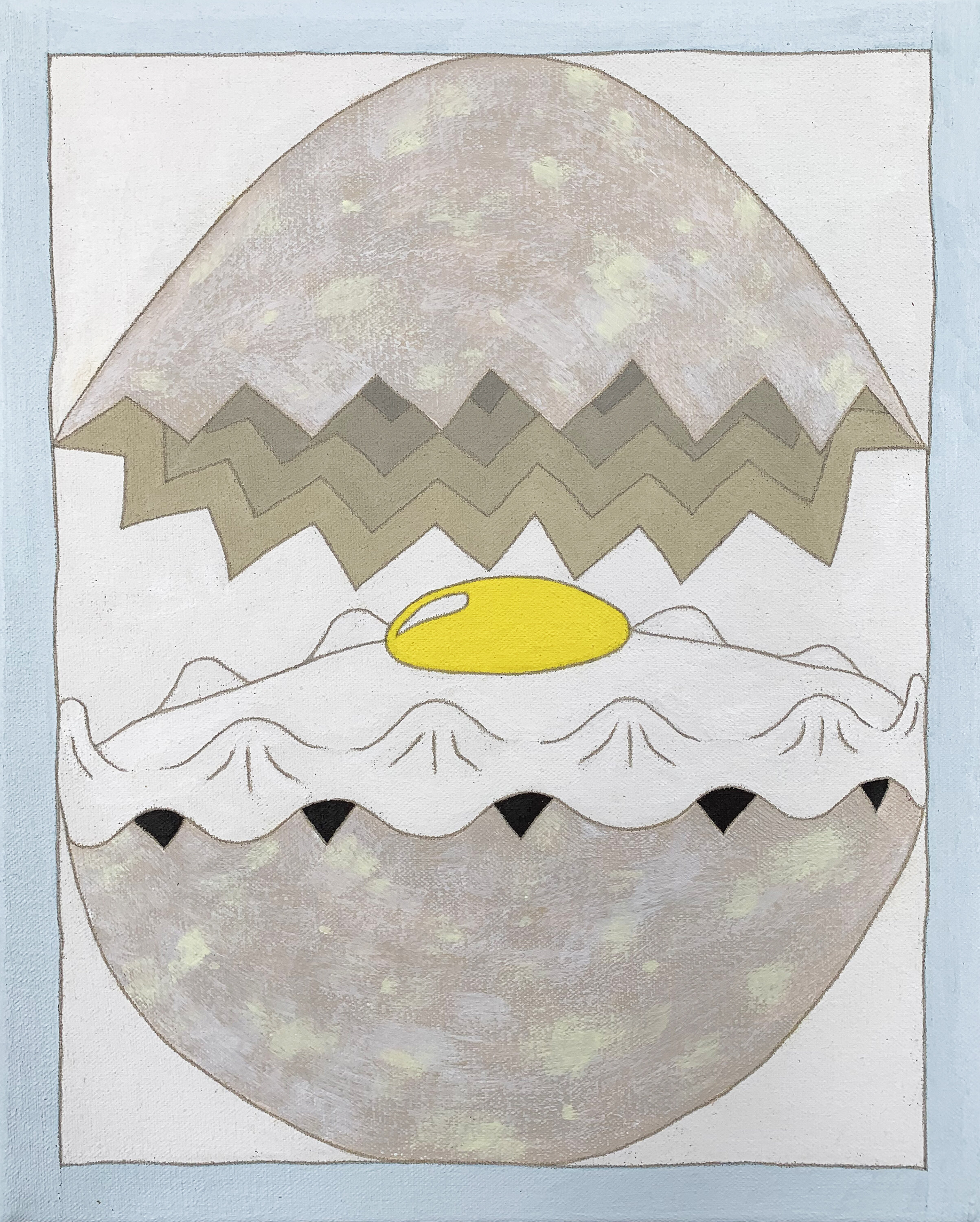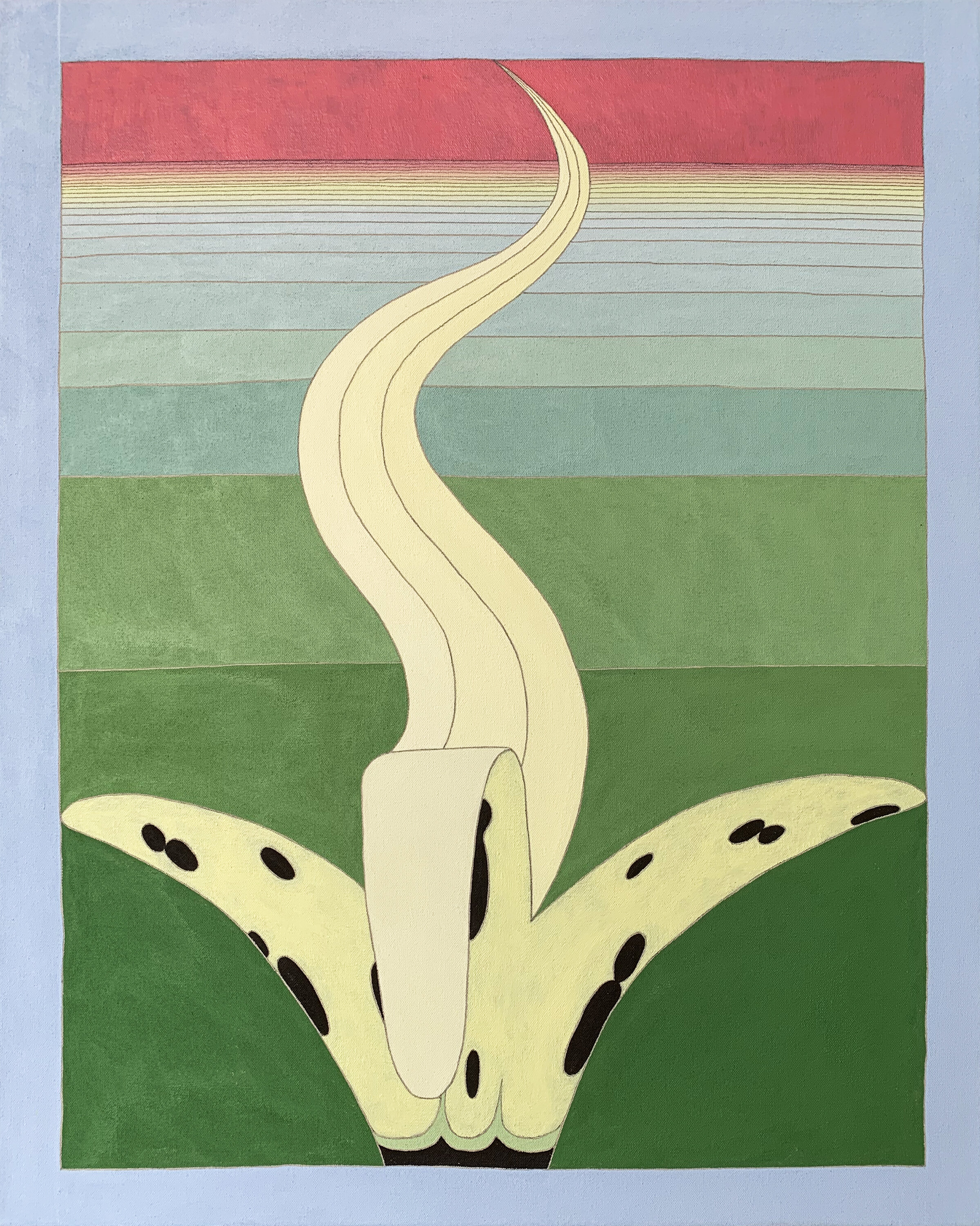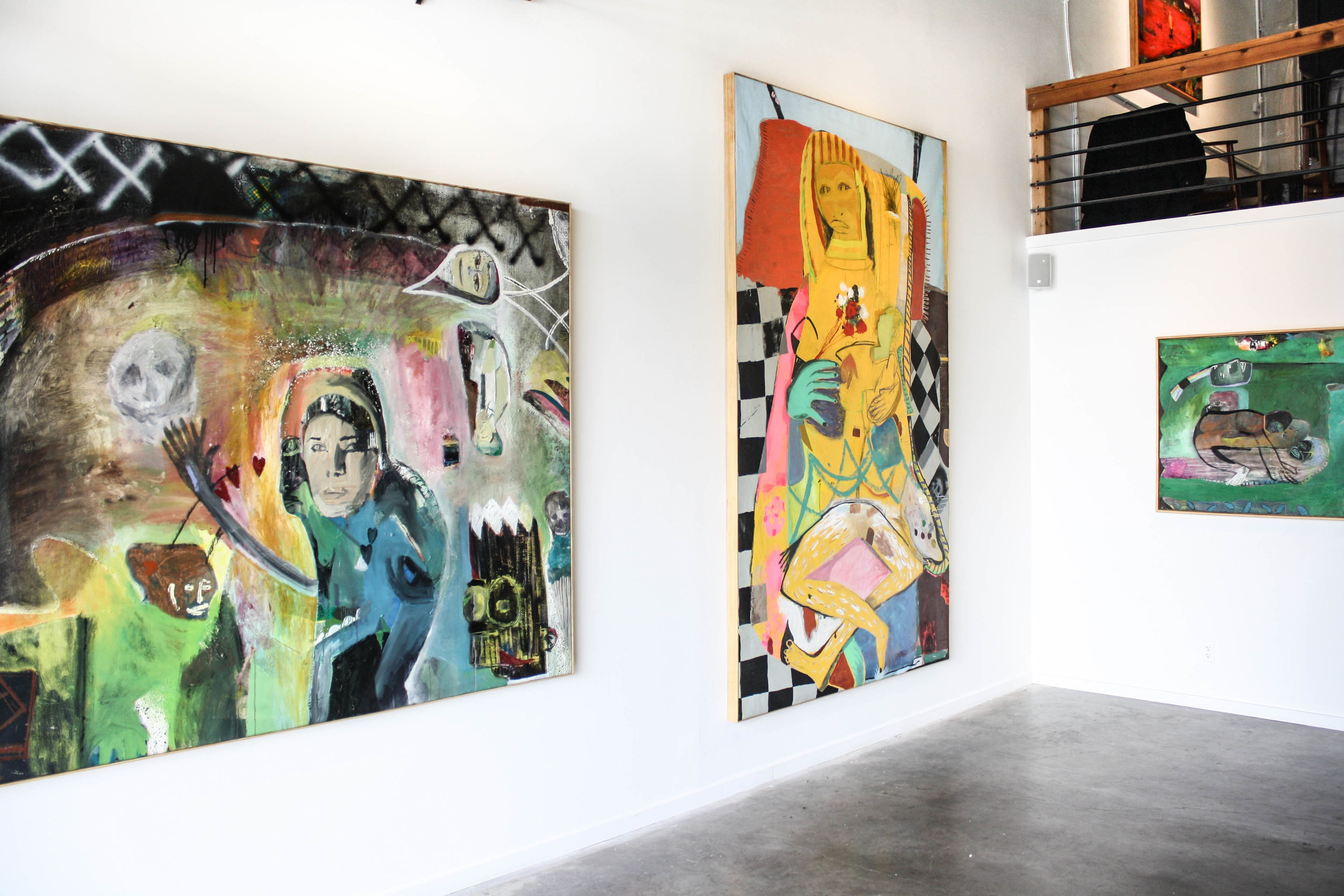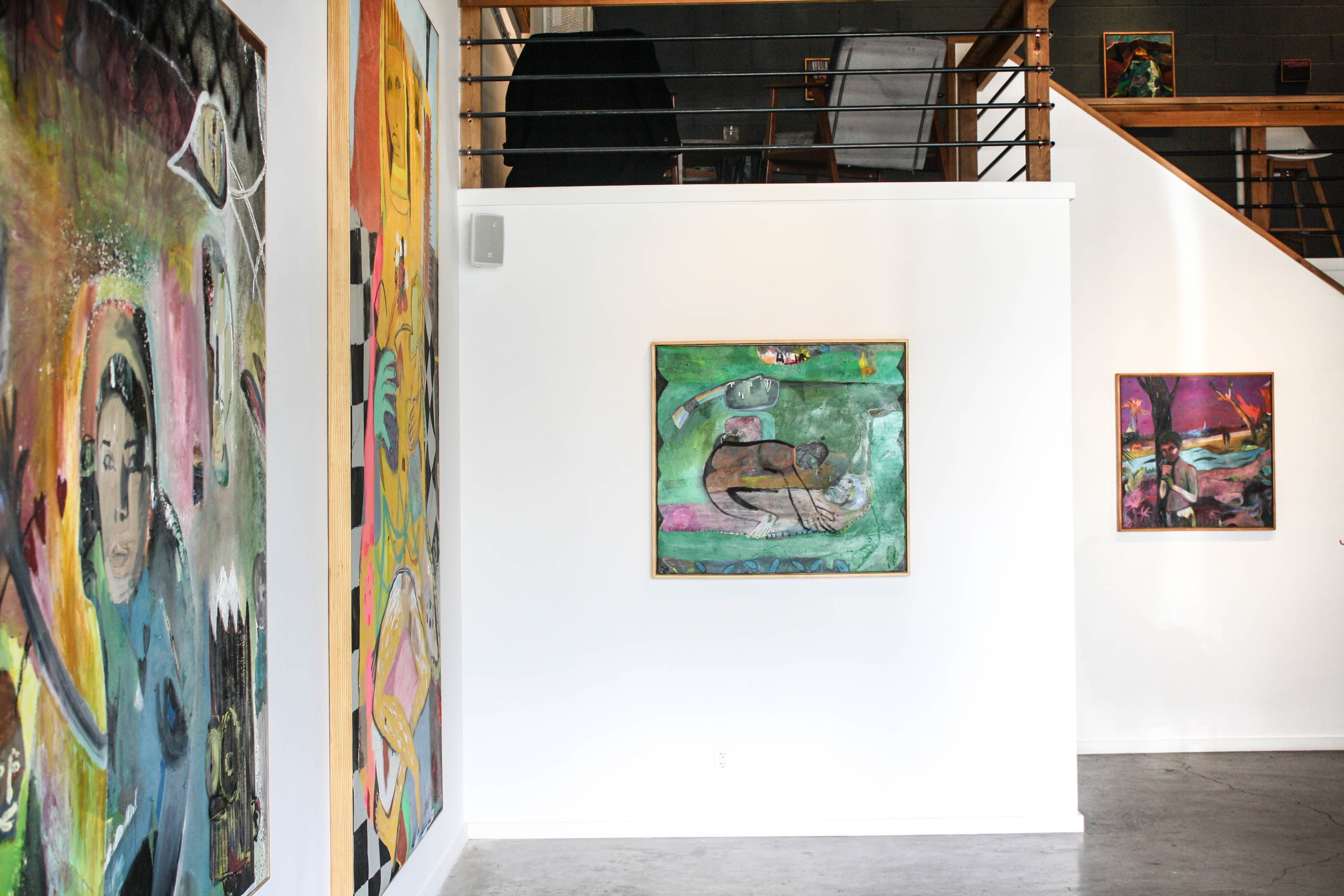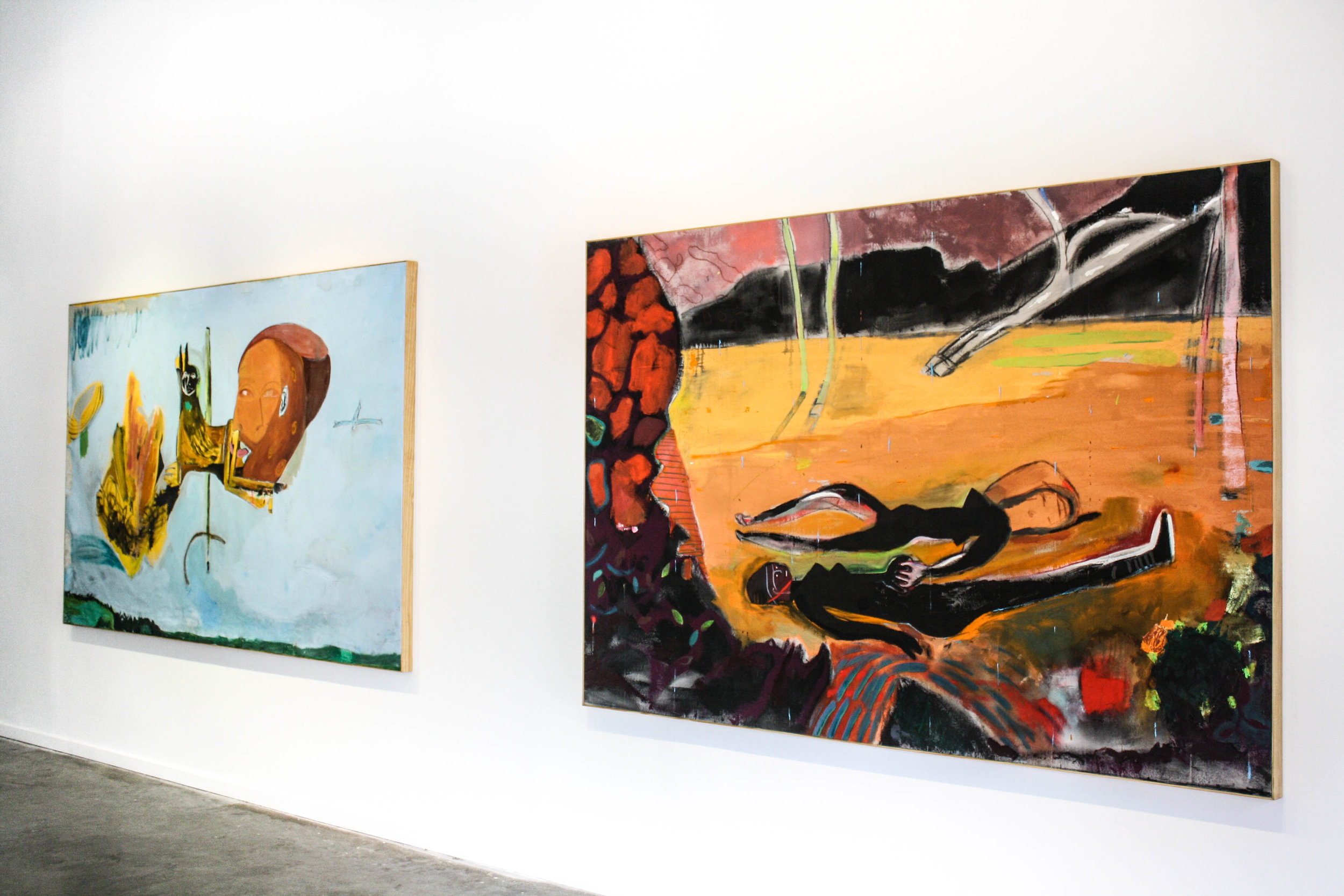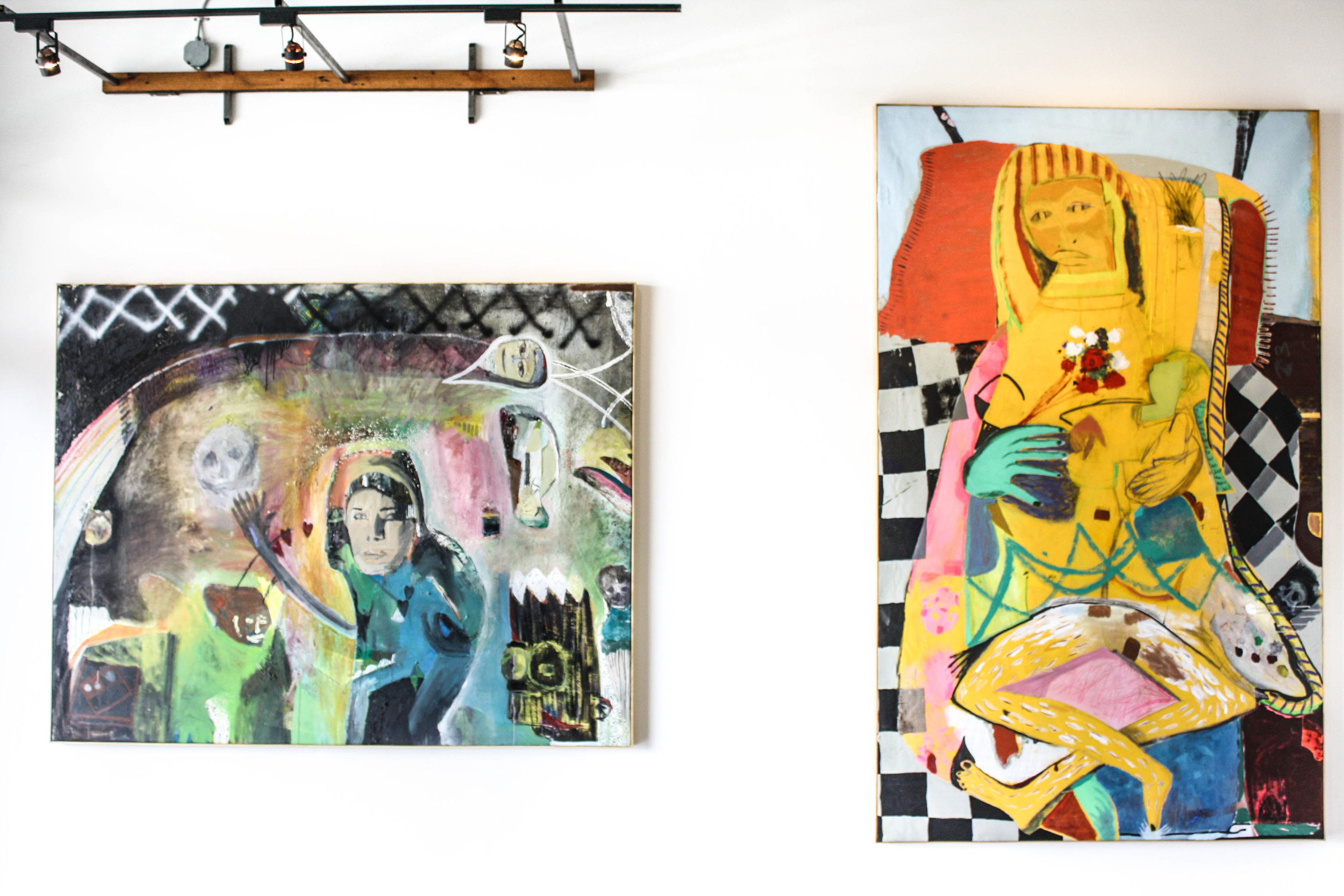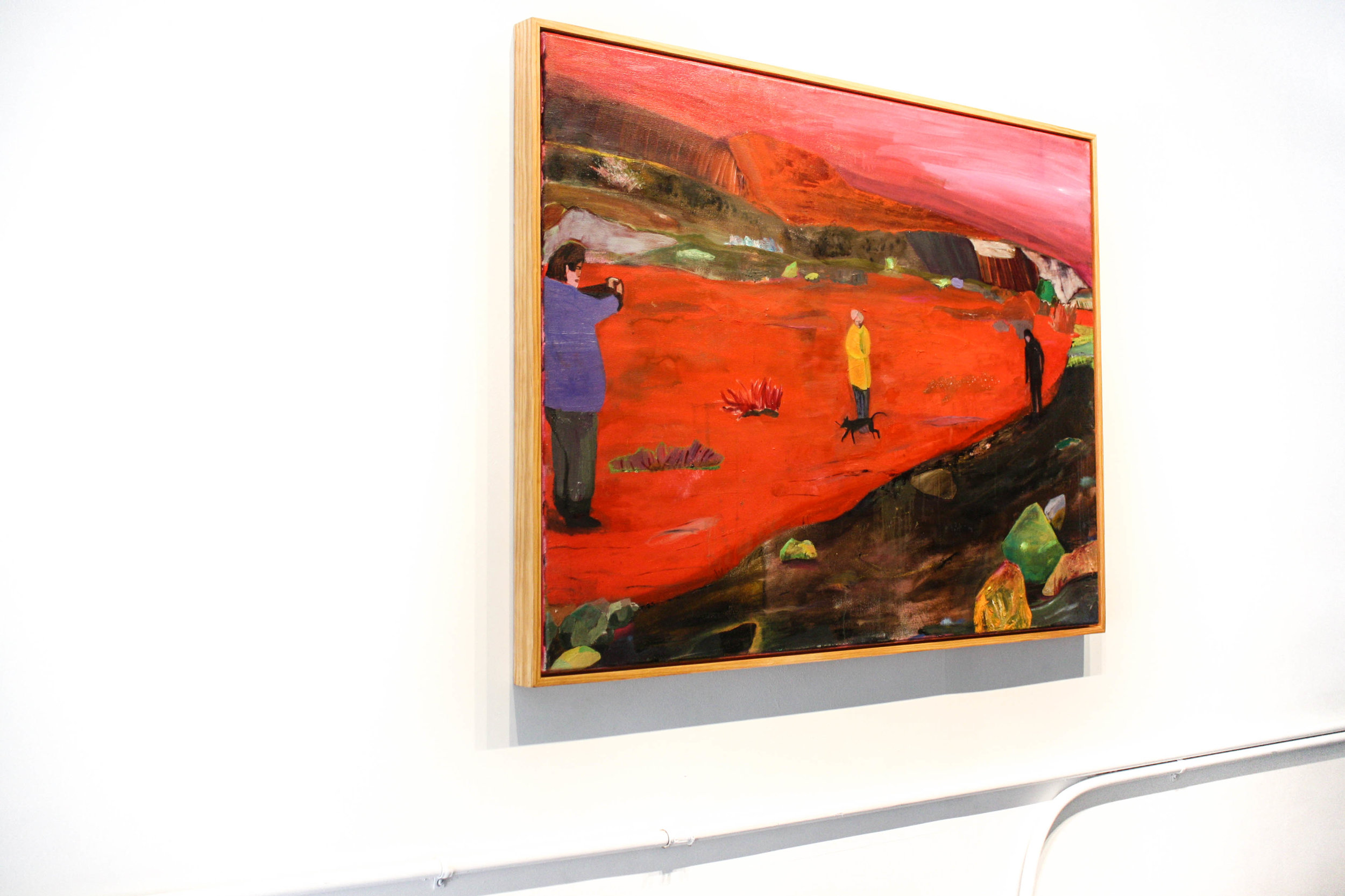I first met Lain York when I moved back to Nashville in 2014, fresh out of Art History grad school, looking to better understand the local art community. It was apparent to me during our first conversation at Zeitgeist Gallery that Lain is a real deal artist, curator, and gallery director. I have a feeling that only some of you will know what I mean when I say this, so I’ll go ahead and spell it out for the rest of you: Lain is not full of shit. He is consistently showing up, making good work, organizing artists, asking difficult questions, and working towards a more sustainable art community in Nashville. And he has been for decades.
I had the pleasure of conducting an interview with Lain in which he discusses his creative process, curating both locally and overseas, and what is (and isn’t) working for artists in Nashville. Thank you, Lain!
Lain York with feline friend
What is your earliest memory of your burgeoning interest in art?
Seeing somebody draw “FRED” with a fat smelly marker on a big pad of paper on Captain Kangaroo.
Fred from television’s Captain Kangaroo. Image provided by Lain York.
How have you witnessed this early interest reveal itself in your current work?
A lifelong interest in drawing (pencil, crayon, marker, pastel, ink, correct tape, etc.)
What motivated and/or inspired you to pursue art making?
When I got out of school, came back to Nashville, and got involved in the artist community, I felt I finally found a practical application for what I was doing. I got to see first-hand what older established studio artists did, how they engaged, and then found my network of creatives working in the area to put on our own shows.
You have been based in Tennessee for decades. How has being an artist in the South informed your work?
Growing up in such a conservative environment was a challenge, especially in a place like Nashville where there was little to no cultural infrastructure at all. The city has always been an educational and creative media center so there were plenty of smart, well-traveled people to hang with but the prospect of making a living doing what I wanted was zero.
Lower Broadway, Nashville, TN circa 1980’s. Photo provided by Lain York.
This situation also gave some of us the notion that we could create a system in which we could engage and we had plenty of regional colleagues. As backwards as it is, I love the south and I have consistently seen the outside drawn here for various reasons. I never had to move to larger networking centers because the underground we were building brought them to us.
“I love the south and I have consistently seen the outside drawn here for various reasons. I never had to move to larger networking centers because the underground we were building brought them to us.”
Have you had opportunities to show your work in other areas of the country/world? If so, tell us about it.
The opportunities I got to show out of the country came from the independent networks we built. These were colleagues that we either brought to Nashville for shows or heard about what we were doing. The most fun was a show in a storage facility in Galway, Ireland that brought artists in from all over the EU. The artists there thought we were a bit mad putting the show where we did as it was all we knew how to do in the US. Then they told us we could have gone to the area arts council and ask them to give us money and a gallery. Now that sounded INSANE to us.
Installation from exhibition held in Galway, Ireland storage facility
Installation from exhibition held in Galway, Ireland storage facility
Other opportunities came from curating international shows, bringing them to Nashville, and then putting those on the road.
60 Second Southern Film Festival, Harmony Landing/Pegram, Tennessee. Photo provided by Lain York.
The 60 Second Southern Film Festival brought artists from all over the world to Nashville. There were 60 artists included, all presenting a 60 second piece. The festival traveled to four countries and the only censorship issue we faced was here in Nashville. Cairo, Egypt, a predominantly Muslim country, tastefully navigated homoerotic references where Nashville demanded edited versions (which we refused).
“The 60 Second Southern Film Festival brought artists from all over the world to Nashville. There were 60 artists included, all presenting a 60 second piece. The festival traveled to four countries and the only censorship issue we faced was here in Nashville.”
Do you find that there is a particular voice or point of view that you are only able to activate visually, that does not translate as well through other forms of communication? If so, why do you think this is?
I feel my work has consistently been a medium to connect me to a spirit world. I believe most human constructs come down to language and creative pursuits are crystalline in that regard in a particular way. That said, the point of view or voice that comes through may not necessarily be my own. My work comes to me in a continuum of ideas others before me had and I get to pick up that conversation and (hopefully) add something to it.
As most “makers” may have experienced, when I reach a particular openness working with material and images and find a particular sensitivity to that media, something unexpected can happen. There is a feeling that one is not alone in the room. Not in a creepy way but a connection to something so much larger that it’s breath taking. And addictive.
I feel this connection bridges my practice in middle Tennessee not only to colleagues in other cities and networks but also across time. I like to believe some of the imagery that I end up with may have been on cave walls for 60 million years and something similar may find its way to other galaxies.
“My work comes to me in a continuum of ideas others before me had and I get to pick up that conversation and (hopefully) add something to it... when I reach a particular openness working with material and images and find a particular sensitivity to that media, something unexpected can happen. There is a feeling that one is not alone in the room. Not in a creepy way but a connection to something so much larger that it’s breath taking. And addictive.”
Your imagery has an abstract, playful aesthetic. What motivates you to work in this manner?
I believe my work is fun to make. Process has always been the payoff. I also believe that humor is a very specific language; it transmits compassion, a particular sense of knowing that invites a viewer in, broadens the interpretation of the work, and pulls the rug out from under it if necessary.
I consider you to be a pillar in the Nashville art community. Have you ever collaborated with area artists on projects, and if so, what were some of your favorites/stand-outs in your mind?
Thank you!
I think most everything I’ve done has been a collaboration in one way or another. Any untitled show was all that as the show functioned as one big collaborative installation. Another of the tops would have to be working with Donna Tauscher on a show for the Fugitive Art Center. Donna is an amazing artist, soul, and writer (she wrote The Han Solo Star Wars Journal when she was working for Lucas film back in the day but never told anyone). Donna also hit the Nashville streets at night leaving phrases like “I am the blind astronaut searching for you” and “a maverick radar guides fate” all over town in her signature yellow enamel.
A Maverick Radar Guides Fate, Donna Tauscher. Photo provided by Lain York.
You have also been a gallery director at Zeitgeist for years. How has your experience as a curator informed your artmaking?
I would say my professional experience overall with the contemporary art industry has had more of an effect on my work than the curating. The closer I got to the moving parts of the upper tiers of the industry, the further away my practice seemed to move from it. I love working directly with artists and putting together/installing exhibitions is my wheelhouse. This proximity has helped me define my practice as my own. Along with that I suppose is that when I traffic in such richly engaging conversations all the time, there is a particular firewall that goes up to ensure I can stay focused on what my work is about.
What have been some of the biggest hurdles you’ve witnessed as a curator and gallery director in Nashville?
Well, the fact that the city and business community have never supported the art community is one. I believe we found a work-around in the late 80’s through the early aughts by building an extremely formidable independent community that has paid huge dividends for more than a few interests. I wish just one of those interests was the sustainability of the studio community. Another is maintaining consistent dialogue and effective engagement between public arts, museum, academic, independent artist-run, and commercial gallery programming. We’ve seen fits and starts of these entities working together and when they do magic happens; the city is transformed. When they don’t, it pretty much ensures that the city and business community will not take art (or culture industry as a whole) seriously as a legitimate industry and the economic impact these influences have been having on the city for years.
“I believe we found a work-around in the late 80’s through the early aughts by building an extremely formidable independent community that has paid huge dividends for more than a few interests. I wish just one of those interests was the sustainability of the studio community.”
Flip side to the previous question, what are some of the biggest strengths of curating in this area?
The connection I make with artists- they are close and they are lasting. Another is the clout the Nashville scene carries in other markets. It has never been a problem getting artists we respect outside the area to come here to show and engage. They knew the sales probably weren’t going to be here but they love Nashville, its mystique, and its reputation in so many professional creative networks. It lends a particular authenticity to what they take back to larger markets, particularly for the EU-based artists.
What method would you prefer one take when making a critique of your art: a formal, contextual, or expressive approach? Why?
I am often asked to make critical evaluations of work by artists. I usually deflect by saying, it’s not what you are doing but what you are doing with it. These days I feel there also needs to be a particular community engagement with it that connects people to what you are doing. Folks coming in and loving your work isn’t enough in this market and this political/social climate.
I feel that a formal response to any work should be backed up by its context (medium/application meeting or supporting message) and vice versa. I feel that is the mark of mature work. I like to hear the artist call it out regarding theirs and I try to make it clear in mine. The community I came up in was very critical. This happened in studio conversation, at shows, and in writing. I haven’t seen that kind of dialogue on the table in years (decades?) and I feel we’ve all suffered for it.
But these are very different times. Language now is very different from that of 5 years ago. It’s evolving faster and faster and we’ve yet to definitively sort this. This is where I think a professional community of writers operating outside the studio community in a professional capacity could help. That said, there is a reason poetry has been inextricably linked to painting. Super-powered language is needed to convey a non-verbal medium in swiftly moving times.
“...there is a reason poetry has been inextricably linked to painting. Super-powered language is needed to convey a non-verbal medium in swiftly moving times.”
Who and/or what are some of your biggest artistic influences? How? Why?
Picasso/Matisse/Basquiat. The biggest may be Cy Twombly.
Twombly’s drawing strategies (or lack thereof) were a lighting strike. Of course, the first exposure yielded an, “Okay, how does he get away with THAT?!!”
Digging deeper and working somatically like that tied it all up neatly and at the same time opened up so many new avenues. My drawing skills were pretty developed at the time and letting go of those was powerful. That moment almost totally irradicated my interest in working in realism. It also seriously eroded my skill and I never went back- it was a particular escape velocity and I am very grateful for it.
How does your work demonstrate departure from the above influences?
The current work up at Zeitgeist features birch panels with graphite and correct tape. I’m not sure there is much of a departure there. I’ve always considered myself a figurative abstract painter (figurative working from nature). If there’s no figure present, it stepped aside; if the image is obscured, it accreted under texture and material or got totally buried; no color, got tossed out. In this case as there was a mark, it was “corrected” and made “to be nothing.”
Installation of Lain York’s work at Zeitgeist Gallery.
What upcoming projects and/or exhibitions do you have planned within the next 12 months?
I’m currently working on an opportunity somewhere to show with Briena Harmening. I really enjoy her, her work, and our involvement with an independent group of Donelson/Hermitage-based artists.
Briena Harmening, Grab the Popcorn, Trapunto stitched letters on fabric with crocheted blanket and airbrush.
I’m planning on a series of 48 x 48” canvases with drawings I have been working on for the past 4 years,
Untitled by Lain York
All images relate to garage rock I have been recording and posting on Spotify and Bandcamp under the name atomicpork.
What are your goals for your art within the next 12 months?
At this point helping organize local shows featuring work/performances relevant to this exciting moment in American/world history that responsibly, compassionately, and constructively move the general well-being of all flora and fauna on this planet forward and gently nestle them into the rightful spots the Benevolent Universal Presence has planned for us all.
Non-art question time: What’s your favorite food and drink?
That would be peperoni pizza and Budweiser.
Band(s) and/or record(s)?
At the moment: Foodman/Moriyama and OOIOO/Gamel
Movie(s)?
2001: a Space Odyssey
Money’s not a factor, you will burn no social bridges, and you’re guaranteed a comfortable lifestyle no matter what—where would you live, and what would you do?
Sit quietly in a semi-darkened room in the house I bought in 1993 in Nashville, TN in relative silence and Individuate, Integrate, and grow in accordance with my inner directives (as dictated by CG Jung and B Kliban).
Political cartoon provided by Lain York
Anything else you’d like to add?
Make stuff, show art- what could go wrong?
Lain York is a visual artist, musician, curator, and gallery director for the Zeitgeist Gallery in Nashville, TN. You can learn more about his work at LainYork.com, and listen to his music on Spotify and Bandcamp under the moniker atomicpork.












